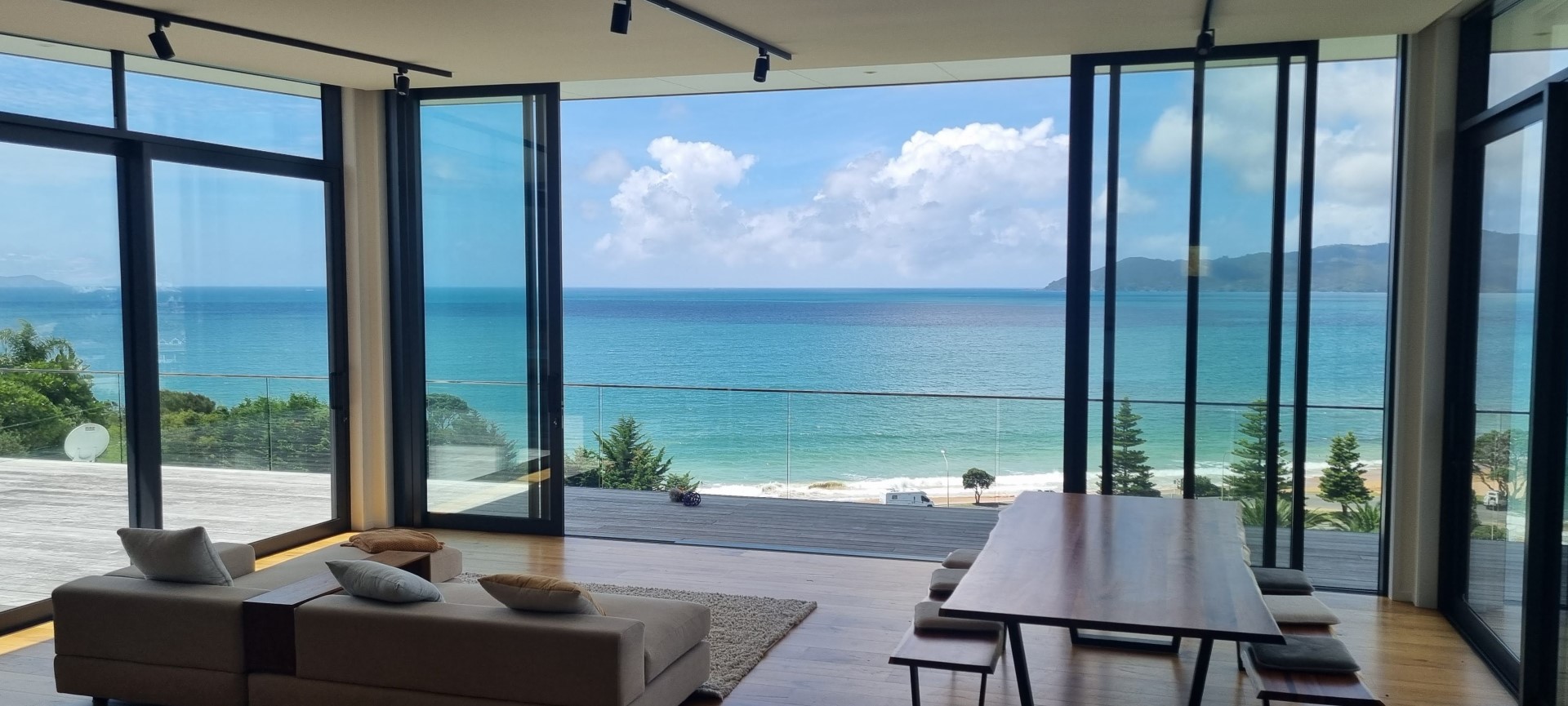Here in New Zealand it’s a very common scenario to be building on a slope, whether it be a house, bach or garage. Sloping sites bring challenges, but they also present positive things like greater views to coastal properties.
Being based in Northland the team here at Arcline have seen our fair share of steep, tricky, sloping coastal sites over our 30 years in the design industry. We’ve used a large range of foundation types, retaining structures and know the pitfalls and challenges of building on sloping sites. Read on to learn more.
Why is building on a slope so common in New Zealand?
It’s the nature of our topography. What we mean by that is look around when you’re driving through the country. Yes there’s flats and plains but alot of our coastal land, and beautiful scenic rolling hills and mountains mean that we’re often wanting to build homes on sloping sites with tricky access.
Generally speaking, sloping sites mean elevation, and elevation equals views. We all love a good view from our living room, which is why so many of us Kiwis purchase sloping sites, often near the coast or in rural or mountainous land to capture those stunning views of our beautiful country.
How ‘Slope’ or ‘Steepness’ is measured
There’s three main ways.
- Ratio (for example, 1:5, meaning 1 in 5, which means 1m height over 5m distance)
- Percentage (for example 10%, or 20%)
- Degree (10 degrees, 30 degrees etc)

The challenges of building on a steep site
There’s one key rule to remember – houses are built level. So no matter how steep your build site is, the house still has to be built level, which is why steeper sites require more earthworks, retaining, foundations, and therefore engineering design.
We at Arcline get a topographical survey of every site before we start designing a building on it. This means we can accurately calculate cut and fill volumes, floor levels, view lines and ensure that the driveway and parking are all going to work once the house is finished. The challenges begin when construction starts. It’s harder for diggers to work, it takes the drainlayer, electrician and builders more time to move around site, the scaffolding is often more complex and costly, cranes and hi-abs are needed for installing things like tanks.
But remember, those views are amazing, so the end result offsets all those challenges right?
Should you pay more for a flatter site?
In our experience – yes. There can be sometimes several hundred thousand to be spent on earthworks and retaining on steep sites, which often means that you could have spent that money on a flatter section to begin with, giving you an easier lifestyle and property to care for at the end of your project.
However the same alternative arises – steeper sites often have better views, so that might just entice you!

What is a Geotechnical (Geotech) Report
Geotech reports are something we get for every project. In short, some geotechnical engineers come to your site, drill some test holes, poke and prod the earth and do a report on the soil types, stability, and recommended foundations for the home or building that’s being designed on the site. The structural engineer and architecture team then uses this report to guide them when designing the foundations of the home.
They usually cost around $5,000 – $6,500 + GST, and depending on the findings another $3,000 might be needed if Cone Penetration Testing is requested from the Geotech Report. We know this sounds alot, and on flat simple sites these costs are often less, but hey – we’re talking about sloping sites here.
Engineered Foundations Explained
If the geotech report requires ‘engineer designed foundations’, this means that a structural engineer will need to be engaged for your project. Most of our projects need a structural engineers input at some stage anyway, for the foundations, or a beam, lintel or post that is spanning a large distance.
Guided by the design team the engineer then designs the foundations, whether it be a concrete slab or timber piles (or a myriad of other foundation construction methods!) and then the architecture team then integrates this design into the plans for submission to council. The structural engineer signs off his design work and then again signs off the work with what’s called a PS4 Producer Statement after he has inspected the work onsite.

Sloping sites give the best views
Unless you can find a rare flat site that has uninterrupted views, most of the time sloping sites give the best views. This is because with the elevation and when we set the floor level, usually (like the above picture) the viewlines from the house look clean over top of any other structures or trees to catch the view.
Our experience with steep, tricky, coastal building sites
Although we do work all over NZ, most of our work is in Northland and with a lot of new homes being constructed along the coastlines of Northland, that means we are involved in designing structures on many tricky steep sites.
We’ve been doing this for 30 years, so it’s no wonder we’ve learnt our fair share of lessons along the way. We’ve used all sorts of different foundation systems, and every home we design is fully 3d modelled in our drawing software, meaning we can accurately see what the home will look and function like once complete.
Take advantage of our knowledge
You won’t find many firms with our breadth and depth of knowledge for sloping, steep building sites. Read through our other helpful blog posts, and you might also want to read our 5 tips for building in Northland.
That is why you should reach out to the Arcline Team today, and we’ll help you bring your project to life.
